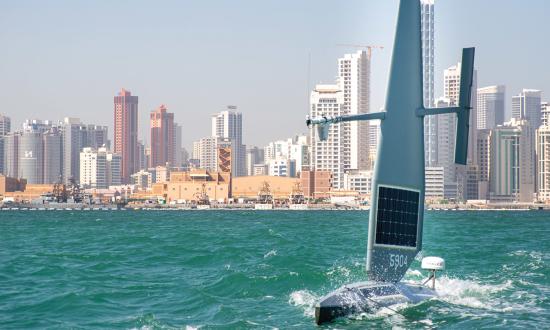Since World War II, the unified combatant command has been the Department of Defense’s (DoD’s) method of doing business. Combatant commands divvy up responsibility based on geography or functionality, enabling cohesive, cross-domain military planning. In theory, these commands are a joint force, but they tend to take on service-specific character and preferences. There are good reasons for this, but as the U.S. strategic outlook changes, what DoD needs from a combatant command also shifts.
Central Command (CentCom)—historically ground-force centric—has been the most active theater over the past couple of decades. But recently, the United States has shifted its emphasis to the Indo-Pacific. To enable the United States to address the emerging threat in the Indo-Pacific, a drawdown of ground operations and resources in CentCom is necessary. Going forward, CentCom should be a maritime-centric command, with a Navy officer as commander.
A Land-centric Past
Established in 1983 as a unified combatant command, CentCom’s initial focus was countering Soviet aggression, but as the decade wore on, regional powers presented new challenges.
CentCom got its first real operational test in 1990–91, expelling Saddam Hussein’s forces from Kuwait in Operations Desert Shield and Desert Storm. As the 1990s continued, international terrorism—much of it emanating from the Middle East—rose to challenge U.S. security policy. It came fully into the public eye with the 9/11 attacks, and CentCom was at the center of the invasions of both Afghanistan and Iraq. It spent the next two decades conducting counterterrorism, counterinsurgency, and nation-building operations in both locations.
This has left CentCom with a legacy of land warfare. Its only real deviations have been the various naval missions to keep Gulf oil flowing during the 1980s and the containment of Saddam in the 1990s, which relied predominantly on air power. This is reflected in CentCom leadership. Since its inception, 10 of its 17 commanders have been Army generals. If the Marine Corps is treated as a ground force as well, it accounts for another six.
A Need for Change
No longer is the Middle East the most strategically active area of the globe. Under the Obama administration, the United States began a “pivot to the Pacific.” China has emerged as DoD’s pacing threat. Shifting priorities—and resources—from CentCom to IndoPaCom makes sense.
So, with attention moving to China, what should CentCom’s focus be? A number of actors, from Iran to violent extremist organizations, still challenge U.S. interests in the Middle East, but their ability to reach beyond the region is limited. There is, however, another focus whose importance transcends the Middle East: commercial maritime trade.
Most of the maritime traffic between East Asia and Europe transits Middle Eastern waters. Closely linked to maritime traffic is energy security. Gulf oil, mostly shipped by sea, remains the linchpin of the global energy market, which itself is a linchpin of the global economy. Safeguarding this maritime traffic should be CentCom’s priority, and the three regional choke points—the Strait of Hormuz, Bab el Mandeb, and Suez Canal—should be the focus for its efforts. A shift to the maritime domain would have the added benefit of better positioning CentCom to influence any potential conflict with China by threatening its maritime trade.
To reflect this new maritime focus, CentCom should be led by a Navy officer.
The United States’ strategic outlook has changed, and CentCom needs to change, too. Realigning a combatant command’s priorities involves more than simply changing who sits in the commander’s chair, but it is a good place to start.







